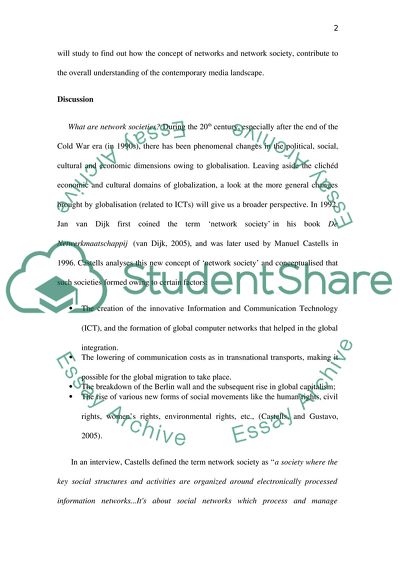Cite this document
(Understanding of the Contemporary Media Landscape Coursework - 1, n.d.)
Understanding of the Contemporary Media Landscape Coursework - 1. Retrieved from https://studentshare.org/media/1751122-how-do-the-concepts-of-networks-and-the-network-society-contribute-to-the-understanding-of-the-contemporary-media-landscape-illustrate-your-answer-by-developing-two-examples
Understanding of the Contemporary Media Landscape Coursework - 1. Retrieved from https://studentshare.org/media/1751122-how-do-the-concepts-of-networks-and-the-network-society-contribute-to-the-understanding-of-the-contemporary-media-landscape-illustrate-your-answer-by-developing-two-examples
(Understanding of the Contemporary Media Landscape Coursework - 1)
Understanding of the Contemporary Media Landscape Coursework - 1. https://studentshare.org/media/1751122-how-do-the-concepts-of-networks-and-the-network-society-contribute-to-the-understanding-of-the-contemporary-media-landscape-illustrate-your-answer-by-developing-two-examples.
Understanding of the Contemporary Media Landscape Coursework - 1. https://studentshare.org/media/1751122-how-do-the-concepts-of-networks-and-the-network-society-contribute-to-the-understanding-of-the-contemporary-media-landscape-illustrate-your-answer-by-developing-two-examples.
“Understanding of the Contemporary Media Landscape Coursework - 1”, n.d. https://studentshare.org/media/1751122-how-do-the-concepts-of-networks-and-the-network-society-contribute-to-the-understanding-of-the-contemporary-media-landscape-illustrate-your-answer-by-developing-two-examples.


